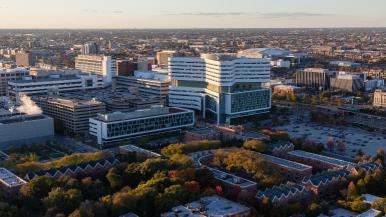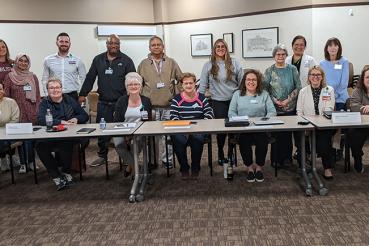Three years before the coronavirus pandemic shone a spotlight on community disinvestment, Rush University Medical Center started dedicating 1 percent of its long-term operating fund to boost lending to West Side businesses, non-profits and others struggling to get access to capital.
Following Rush’s initial investment in 2017, other Chicago hospitals and healthcare organizations were motivated to follow Rush’s lead and invest, too. Now, a coalition that includes Rush, the American Medical Association and West Side community hospitals has loaned a total of $9.1 million into West Side neighborhoods.
“Our core strategy is to improve the health of people who live in our communities and to reduce the huge [16-year] life expectancy gap between West Side residents and those who live in the Loop,” said Alex Wiggins, Rush’s chief investment officer.
In order to make such investments work, partners like Rush use Community Development Financial Institutions, or CDFIs. The U.S. Treasury Department certifies CDFIs to lend to low-income borrowers, along with other groups that are often underserved by the financial services sector. In addition to providing grants and low-interest loans, CDFIs also offer gap financing that recipients can leverage to get bigger traditional loans and complete larger-scale work.
Rush’s debt investments with CDFIs generally have terms of three to five years at interest rates of 1 percent to 2 percent over comparable U.S. Treasury rates. Though returns are lower than what Rush would expect to earn if seeking a purely financial return, the below-market-rate loans enable the CDFIs to inject capital directly into underserved communities.
“These are investments, not donations or grants,” Wiggins said. “We fully expect to get our funds back with a small financial return in the short term, but also with the longer-term health benefits these projects can yield, like more jobs, better housing and thriving small businesses.
One of the CDFIs that Rush works with is the Chicago Community Loan Fund (CCLF), Angela Dowell, a South Shore native who now lives in Bronzeville and serves as the chief financial officer.
“My family and I are from a Chicago community that CCLF serves with its financing, creating affordable housing and access to retail goods and community services — and that’s why I enjoy the work that I do,” Dowell said.
Working with Rush and other healthcare coalition partners, CCLF helps direct essential funds into neighborhoods like Austin, East Garfield Park, West Garfield Park, Humboldt Park, Little Village, the Near West Side, West Town, North and South Lawndale and Pilsen.
Since CCLF’s inception 30 years ago, it has closed on 556 loans totaling $260 million, ensuring access to capital in lower-income neighborhoods throughout the Chicago area.
In 2020 alone, CCLF closed on nine loans totaling $4.5 million for projects on Chicago’s West Side, including $1 million to Circle Urban Ministries to help fund the St. Josephine Bakhita Recovery home. The home provides space for housing, recovery and healthcare services so families can stay together.
CCLF has partnered with Rush on several affordable housing-focused projects, which can improve community health in several ways, said Tricia Johnson, PhD, professor, Department of Health Systems Management in the College of Health Sciences at Rush University.
“Better housing greatly reduces mental stress and thus the conditions exacerbated by stress,” she said. “Affordable housing frees up money for other necessary items, such as food and medicine, and improved housing also reduces illnesses from lead poisoning, asthma, accidents and the infectious diseases driven by crowded housing.”
“Minority businesses have historically faced challenges accessing capital and obtaining equity, and that was a primary reason for the recent launch of BMO EMpower, our five year, $5 billion commitment to address key barriers faced by minority businesses, communities and families in the U.S.,” said Eric Smith, vice chairman of BMO Harris Bank.
“Rush University Medical Center shares our focus on working to ensure an equitable society, and it was that mutual vision that led directly to our $10 million commitment to create the Rush BMO Institute for Health Equity to decrease health disparities and improve health equity and economic vitality in the communities that we both serve.”
Two key elements of BMO EMpower include a small business lending program focused specifically on providing capital to minority businesses, as well as a commercial lending initiative designed to accelerate lending to minority-owned and managed commercial enterprises. BMO EMpower also includes a strong commitment to community development and lending in low-to-moderate income communities.




